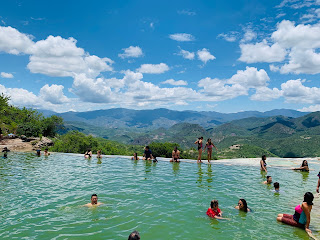A calenda is basically a parade filled with laughter, dance, music, and displays of people's cultures.
The word calenda comes from the Greek and in a few words it is a calling to come together and celebrate one's religious practices. In Oaxaca, however, a calenda goes beyond religion for it also celebrates Indigenous practices, traditions and culture.
The state of Oaxaca is divided into seven geographical areas and each area has different Indigenous communities. During the Guelaguetza Festival, the different communities come to Oaxaca to participate in exhibitions, dances, music concerts, food expositions, drinking (mainly mezcal) expositions, and arts and crafts expositions.
While the Guelaguetza Festival happens during the entire month of July, it is during the last two weeks of the month when the festivities intensify. This has to do with two main factors: 1) Lunes de cerro (Mondays of the Hill) and 2) Las Candelas de las delegaciones (The Delegations' Candelas). I will talk about Mondays of the Hill in another post. This post is all about the calendas.
As part of the celebrations, each region is allowed to bring a minimum of one delegation and maximum of three delegations per region. The delegation represents a specific community from one of the seven regions of the state. Some delegations are composed of two or more different communities within a region, depending on the size of the community and economic factors.
During the last two weeks of Guelaguetza Festival, these delegations gather at a specific time and place and walk down the streets from "Point A to point B." Point A is their gathering area and Point B is the Oaxaca's city's main plaza: El Zócalo.
Each delegation has an estandarte (banner) which lets people know to what communit(ies) they belong and from what region. And as they walk down the streets, they dance, yell the name of their community and region, throw random gifts to onlookers, and share mezcal shots with many.
In short, the whole calenda is a celebration of culture, religion, art, dance, music, and Indigenous practices. Best experience ever!!!
In short, the whole calenda is a celebration of culture, religion, art, dance, music, and Indigenous practices. Best experience ever!!!
Here's a short video showing one the calendas:
Next: THE MUXE!






















































